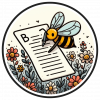I am looking for recommendations on the microphones to conduct bird and amphibian bioacoustic research, that I am conducting in South America. My partner organization and I are new to bioacoustic research and are primarily interested in conducting species inventories and monitoring.
Affordability, ease of use, and quality are the main factors I looking for - bonus points if the settings can be put in Spanish
6 August 2024 4:19pm
Hi Vasilios,
There are a number of off-the-shelf, ready-to-use recorders for passive acoustic monitoring! I would say Audiomoths (from Open Acoustic Devices) and SongMeters (from Wildlife Acoustics) are the most common used.
- Audiomoths are the cheapest option and can be made even cheaper with group buys run through GroupGets. In group buys the devices are usually $80 and then the case is another $35, so $135 total. But you can also buy them outside of the group buys, where it's a bit more expensive ($150). You can also buy them through LabMaker. Audiomoths are small, light, and take 3 AA batteries and a microSD card. There is a desktop configuration app that you can use to set all of the parameters (sampling schedule, sample rate, etc.). Audiomoths can record all the way up to ultrasonic, so you can detect bats with them as well. There is also a user support forum where you can post questions and such. The trade-off with being cheap is that they tend to have a shorter lifespan than other recorder types. Lots of the documentation and tutorials are on the website, so you can use the Google Translate plugin to translate the page to Spanish.
- SongMeters are a series (there are the SM4s, SongMeter Minis and SongMeter Micros), but I usually use Micros - they're the smallest and cheapest, at the expense of shorter battery life than the Minis and SM4s. Micros also have an internal mic (inside the case) whereas the Minis and SM4s have an external mic that sticks out of the case. The Micros are $150 each and take 4 AA batteries. One of the big benefits of SongMeters is that the configuration is done through a phone app (connects to the device through Bluetooth), so you can do configurations in field and check recorder status really easily. This will also help with language - because the app will adopt the language you have on your phone. Wildlife Acoustics has good user support as well - there is a Facebook group and you can contact their team directly. They have a TON of documentation, video tutorials and resources which are awesome. The user guides are available in Spanish as well.
- BARs (from Frontier Labs; $600) have by far the longest battery life, and have a solar panel option ($800) to really go for super long-term deployments. They also allow for localization which is huge. There is a new smaller, cheaper version - BARv2 ($340). All with rechargeable lithium ion battery packs. They have a long warranty too which is nice. BARs have a built-in LCD screen and controls, so you can configure it right on the device itself.
- Swifts (from Cornell Yang Center for Conservation Bioacoustics) are ~$350 and have 2 build options - 'regular' (4 AA batteries, external mic) and 'rugged' (built into a pelican case, internal mic, takes up to 12 D batteries which is good for really long-term deployments).
There are also other considerations and costs like batteries, SD cards, cables, etc. For batteries, I usually recommend avoiding NiMH/rechargeable batteries - the lifespan is bad with recorders usually and highly variable. SanDisk Extreme is best SD card brand in my experience (and best for Audiomoths, see this other discussion thread). For Audiomoths and Swifts, you'll need a USB cable to connect the device to a computer to configure them (Songmeters and BARs you wouldn't). You will also want to think about how you are attaching them to a substrate when you deploy - zip ties, cable locks, etc.
I know that's a ton of information, but hope that all helps! I'm happy to have a call with you as well if you'd like to walk through specifics and also talk about survey design and how to configure the devices best for your use case - shoot me a DM here :)
All the best,
Carly

Vanesa Reyes
WILDLABS
Wildlife Conservation Society (WCS)
7 August 2024 12:21am
Hi Vasilios,
Just wanted to share with you this paper that shows configurations for Song Meter Mini and Audiomoths in Spanish. I know it can sometimes be challenging to find Spanish materials on bioacoustics, so I thought this might be useful for you.
Best, Vane
24 September 2024 3:25pm
Or you could use my sbts-aru project. Which is free software that runs on Raspberry Pis. It also allows you to perform sound localization remotely if required, without bringing the SD card back. Last night I had a listen to some calls in the jungle from Lajuma research center in South Africa that was recorded with them. @nlubcker and I expect to do some localization tests soon from the species down there.
If your Pi is connected to a network you can do localization in near real time (less than 10 minutes manually) as you don't have to stop the recorder or post process the recordings. If you write you own pipeline you can implement real-time sound localization with it and output a URL to a google maps location.
GitHub - hcfman/sbts-aru: Low cost Raspberry Pi sound localizing portable Autonomous Recording Unit (ARU)
Low cost Raspberry Pi sound localizing portable Autonomous Recording Unit (ARU) - hcfman/sbts-aru
My advice for microphones is the em272 microphone capsules based ones, which are very high quality microphones used as by the Swedish company Telinga in their parabolic microphones. That's what I use. They are very low noise and very sensitive. Here's a link to one, likely hard to get at your side of the world though.
Clippy EM272Z1 Mono Microphone - Veldshop
A clip-on lavalier microphone using the superb low noise, high sensitivity Primo EM272Z1 omni capsule.
In my testing they appeared to be similar in performance to some Rode clip microphones and similar in price. They are likely more easily obtained where you are.












Carly Batist